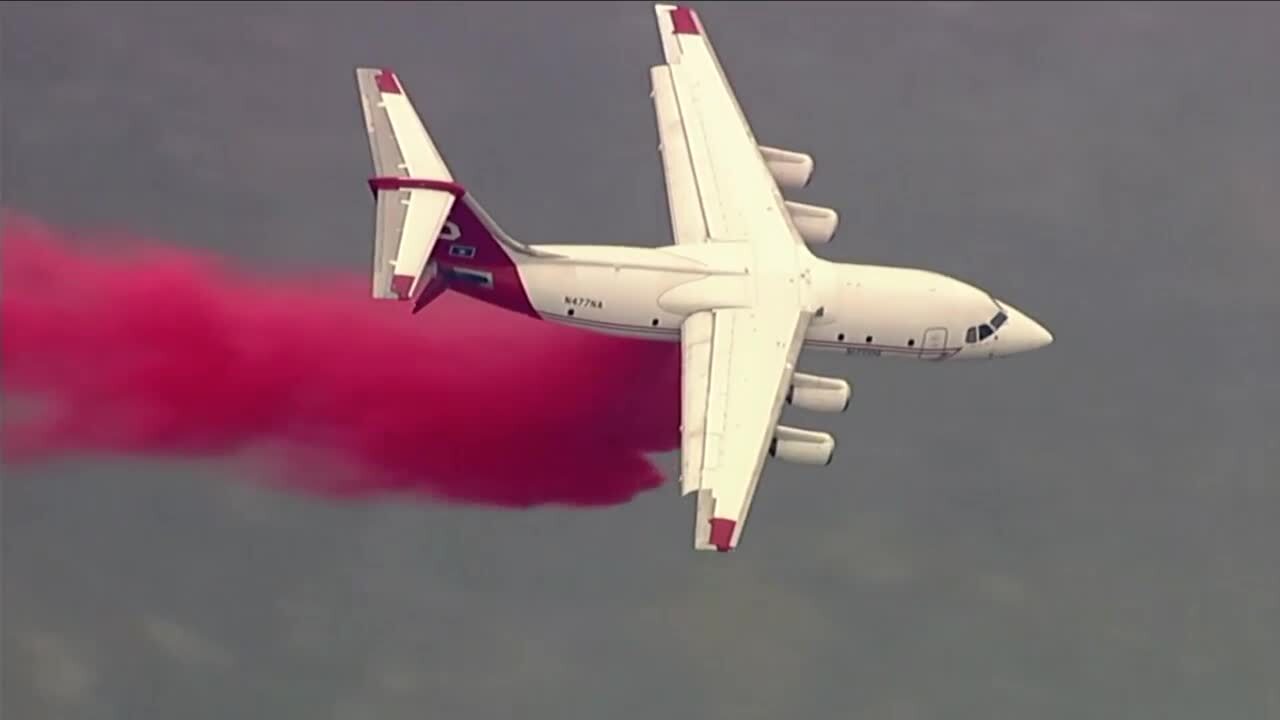MISSOULA — The current fire season has kept Neptune Aviation’s tankers and crew spread across the Western U.S. and as far east as Minnesota, and it’s on track to compete with some of the busier seasons in recent years.
Through fuel shortages and COVID scares, the Missoula-based company has managed to navigate the challenges that have come with 2021 while lending aid to the nation’s fire-fighting efforts.
“We’ve had a very busy fire season,” said Dan Snyder, senior vice president with Neptune Aviation. It’s keeping up with some of the record-setting years we’ve had. The fire activity has been high.”
Predicting one fire season to the next is a difficult task given seasonal variations and the disparity in regional fire activity. While 2017 was a busy one, 2019 was relatively quiet.

This year, Snyder said, Arizona and New Mexico have been quiet fire wise, though other regions of the West, including Montana and Oregon, have been highly active.
“Arizona and NM had an early season, but came to an end fairly quickly,” Snyder said. “The rest of the West has been active for us. One of the main challenges we’ve had so far this year has been fuel, especially in the Northwest. Covid hasn’t been as big of an issue as last year.”
Since the start of the calendar year, Snyder said Neptune has flow 1,700 hours. Its crew, comprised of 34 flight personnel and around 40 maintenance personnel, have logged long hours fighting Western fires.
But Neptune has been able to rotate staff to fend off fatigue, and it has largely escaped any COVID impacts. But fueling issues have presented challenges, Snyder said.

“In a worst-case scenario, it can ground air tankers,” he said. “What we’ve been able to do is keep that potential to a minimum by working with the Forest Service, and as airports become fuel critical and their supply drops down, the Forest Service will move tankers to a different location.”
In late July, the demand for fuel was up nearly 30% from the start of the year, and inventory in the Rocky Mountain region and West Coast had dropped. Supply chain disruptions and demand from both airlines and firefighting units had widespread impacts.
According to the Associated Press, delays at Bozeman Yellowstone International Airport were the result of jet-fuel demand from firefighting aircraft in both Montana and the Pacific Northwest. A lack of tanker deliveries also prompted flight disruptions in Fresno.
But when Helena runs short on jet fuel, Snyder said the tankers are rerouted to Missoula, and similar scenarios have played out in other states. The impact on firefighting efforts is minimal, prompting an average 10-minute delay during refueling.
“The Forest Service can plan for that by bringing more resources on scene to allow for that 10-minute time frame,” Snyder said. “We know how to deal with this from the past when we have big fire busts and an airport or two will run out of fuel. What’s been unique with this one is that it’s been widespread. It’s not uncommon to run an airport out of fuel because of heavy air tanker operations. It’s just uncommon to see it this widespread.”

Snyder said Neptune’s business model is based on a number of factors, though he said there was room for growth. But that’s up to the federal government.
“From a long-term standpoint, the industry has quite a bit of capacity out there. The biggest issues come down to the Forest Service and federal government, and if they’re willing to staff long-term contracts where the industry can grow,” Snyder said.
“If they start to look at fire from a suppression standpoint, very similar to the way the state of California does, there is growth potential. But if it stays where the Forest Service is just managing fires, I don’t think you’ll see the tanker program growing much.”


